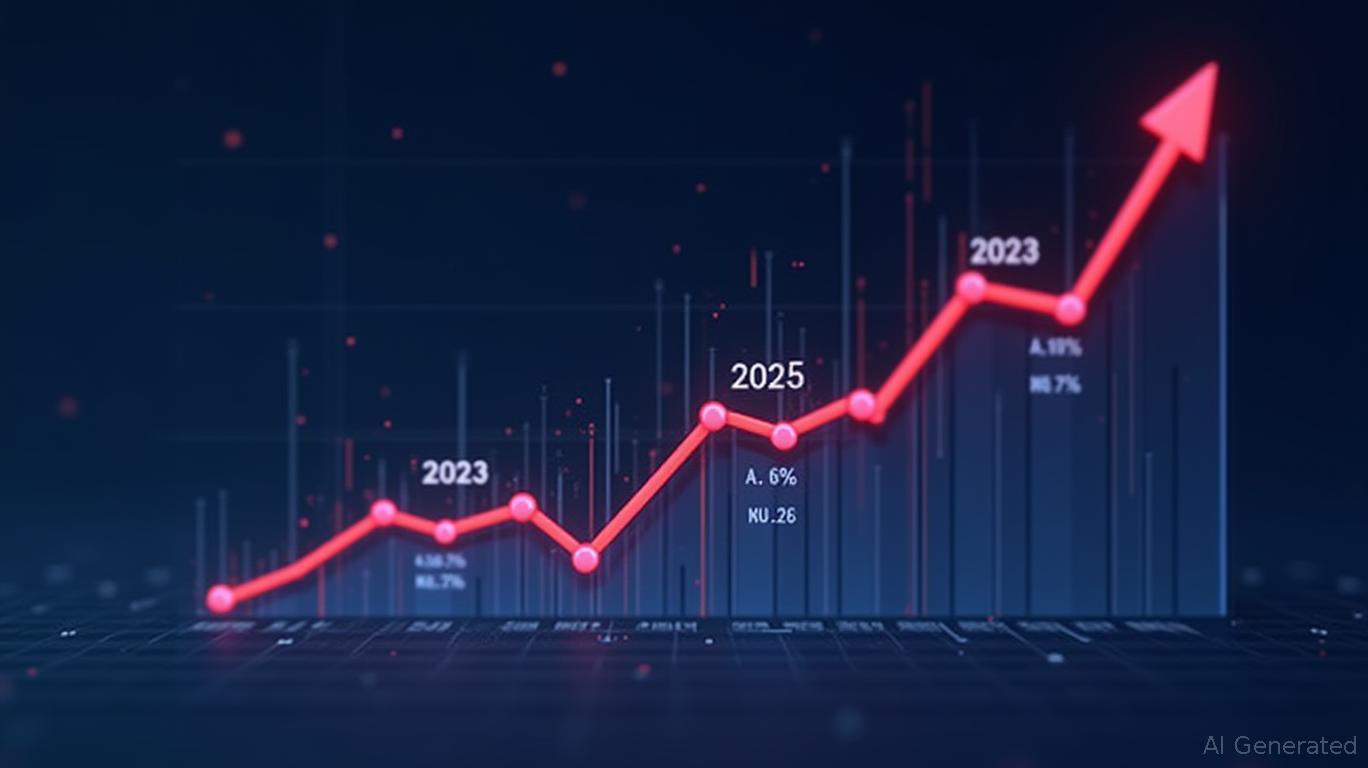The AI Revolution: How OpenAI is Redefining Financial Markets and Investor Strategies
The rapid ascent of OpenAI has not only transformed how businesses operate but also reshaped the very fabric of financial markets. With its groundbreaking AI models like ChatGPT and DALL-E, OpenAI has become a linchpin in the global tech ecosystem, driving volatility, reshaping investor strategies, and creating both opportunities and risks for portfolios.
The Financial Footprint of OpenAI
OpenAI's valuation has skyrocketed from $29 billion in late 2023 to an estimated $150–157 billion by mid-2025, fueled by triple-digit revenue growth—from $3.7 billion in 2024 to $11.6 billion in 2025. Yet, this growth comes at a cost: projected losses of $14 billion by 2026, driven by exorbitant computational expenses for training AI models. This dichotomy—massive revenue potential versus unsustainable losses—creates a precarious dynamic for investors.

Tech Giants in the AI Arms Race
The AI revolution is not limited to OpenAI itself. Companies deeply tied to its ecosystem are reaping rewards—and bearing risks.
- Nvidia: As the backbone of AI infrastructure, Nvidia's revenue surged 114% in 2024 to $130.5 billion, fueled by demand for its GPUs. Its Blackwell platform, now critical for OpenAI's cloud partners, has solidified its position as the go-to hardware provider.
- Microsoft: Its $13 billion OpenAI partnership has paid dividends. Azure OpenAI services now serve 65% of the Fortune 500, and the Azure AI Foundry has attracted 70,000 companies. Microsoft's stock reflects this synergy, though its diversification into rivals like DeepSeek's R1 models underscores the need to mitigate overreliance.
- Alphabet: Despite competition, Google's Gemini series and $75 billion AI infrastructure investment in 2025 highlight its determination to stay ahead.
AI-Driven Trading and Market Volatility
The Bank of England's 2024 warning about “herding” behavior in AI-driven trading is prescient. When algorithms using similar data and models react identically—say, during a market downturn—the result can be synchronized selloffs that amplify volatility. For example, Nvidia's stock dipped briefly in 2024 when DeepSeek's launch spooked investors, illustrating how niche developments can ripple across markets.
Meanwhile, the generative AI in trading sector is booming, with a projected CAGR of 25.4% to reach $2.36 billion by 2034. Firms like Kavout and Numerai are leveraging AI for portfolio optimization and risk assessment, yet challenges loom. Data bias, regulatory scrutiny, and the need for transparency in AI decision-making remain hurdles.
Risks to Navigate
- Technological Obsolescence: OpenAI's models could quickly become outdated if rivals like Anthropic or Meta's Llama outperform them.
- Regulatory Headwinds: Investigations into Microsoft's partnership with OpenAI and calls for AI-specific regulations could disrupt valuations.
- Market Sentiment: Overhyped expectations may lead to corrections if revenue growth falters.
Investment Strategies for the AI Era
Investors must balance OpenAI's potential with its vulnerabilities:
- Diversify Across Sectors: Allocate to GPU manufacturers (e.g., Nvidia), cloud providers (e.g., Microsoft), and AI infrastructure specialists like CoreWeave.
- Monitor Regulatory Milestones: Positive outcomes in antitrust cases or AI safety regulations could unlock upside; adverse rulings might trigger sell-offs.
- Use Options for Protection: Consider put options on tech ETFs (e.g., XLK) or competitors' stocks to hedge against volatility.
- Long-Term Focus: While short-term traders can profit from news-driven swings, long-term investors should prioritize companies with scalable AI models and diversified revenue streams.
Conclusion
OpenAI's influence is undeniable, but its path to profitability remains fraught with obstacles. Investors must adopt a nuanced approach: capitalize on AI-driven growth in hardware and cloud infrastructure while hedging against regulatory and competitive risks. The AI revolution is here, but navigating it requires vigilance, diversification, and a clear-eyed view of both opportunity and fragility.
As the saying goes, “The future belongs to those who prepare for it.” In this case, preparing means understanding OpenAI's role—and its limits—in reshaping finance.

Comments
No comments yet